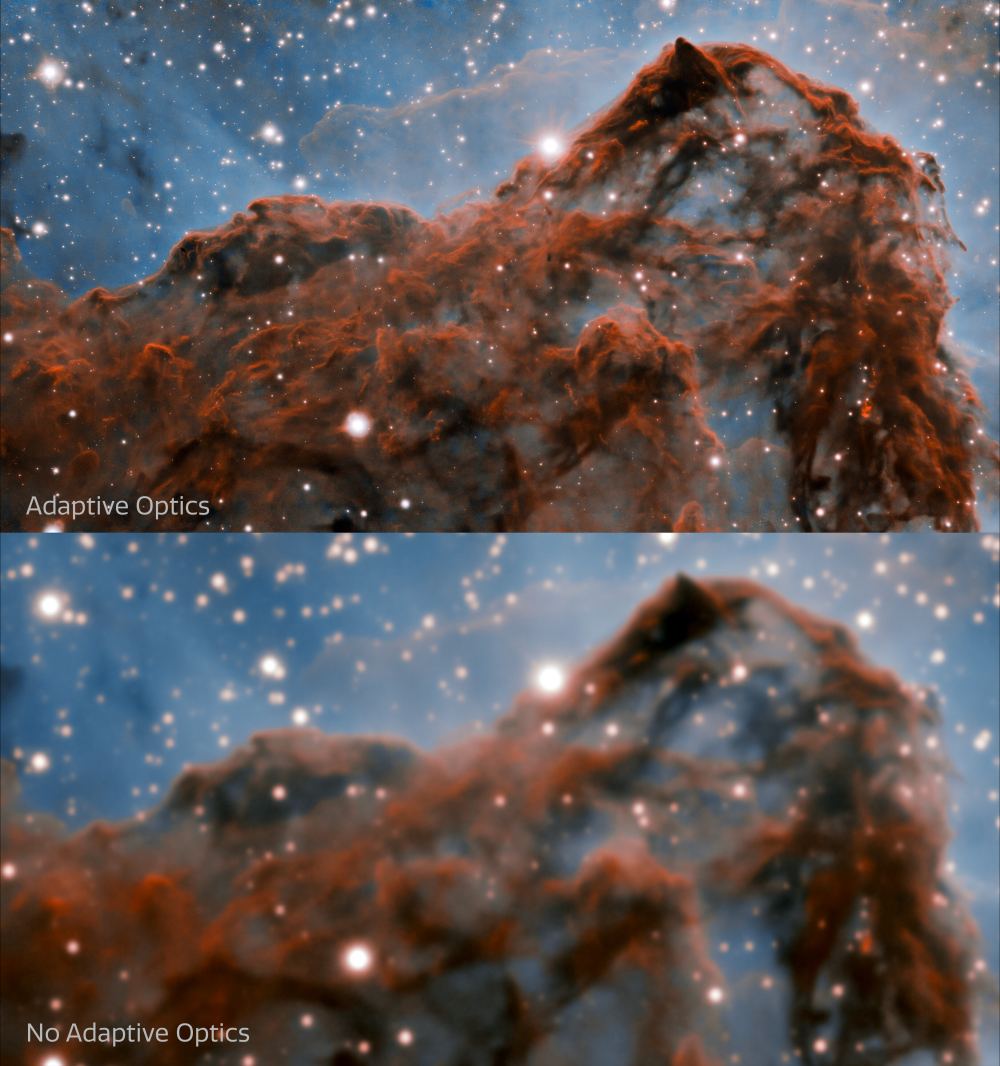Ever wonder how modern astronomical observatories take such clear images of distant objects? Advances in mirror design have allowed for larger and larger primary mirrors. But adaptive optics play a huge role, too.
The Earth’s atmosphere is what makes the planet livable. Without it, Earth is a barren world. But the same thing that protects and sustains us is also an obstacle when it comes to astronomy. The atmosphere can introduce a lot of “noise” into images from astronomical observatories.
Thermal currents can introduce a sort of “shape” into the atmosphere, creating what’s called a wavefront distortion. That can distort telescope images. When the observing target is at a great distance, tens or even hundreds of thousands of light years away, that noise can obscure a lot of the scientific information in those images.
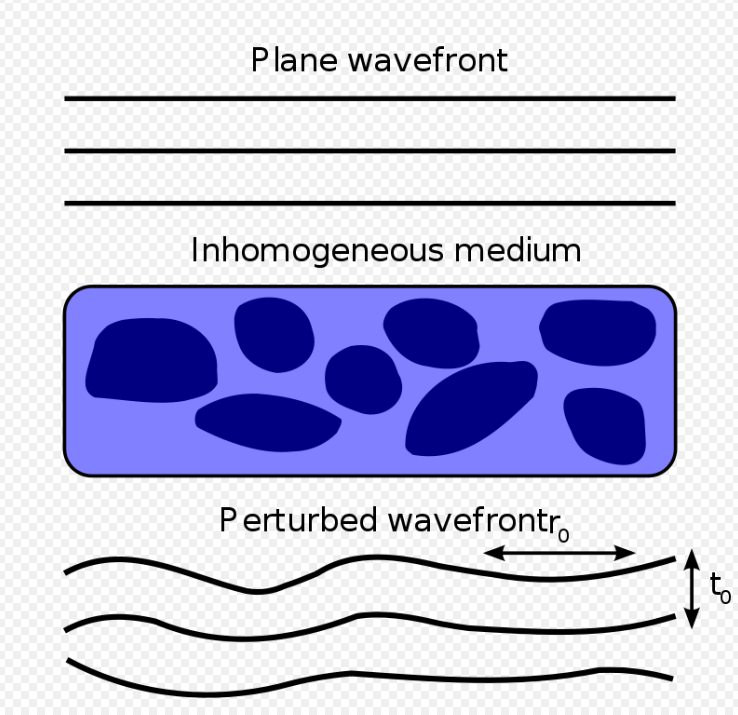
Adaptive Optics (AO) were developed to manage the problem.
AO works by first detecting any incoming wavefront distortions. Then, it adjusts or deforms the telescope’s mirrors to adapt to it. To do this, AO systems on astronomical observatories use guide stars.
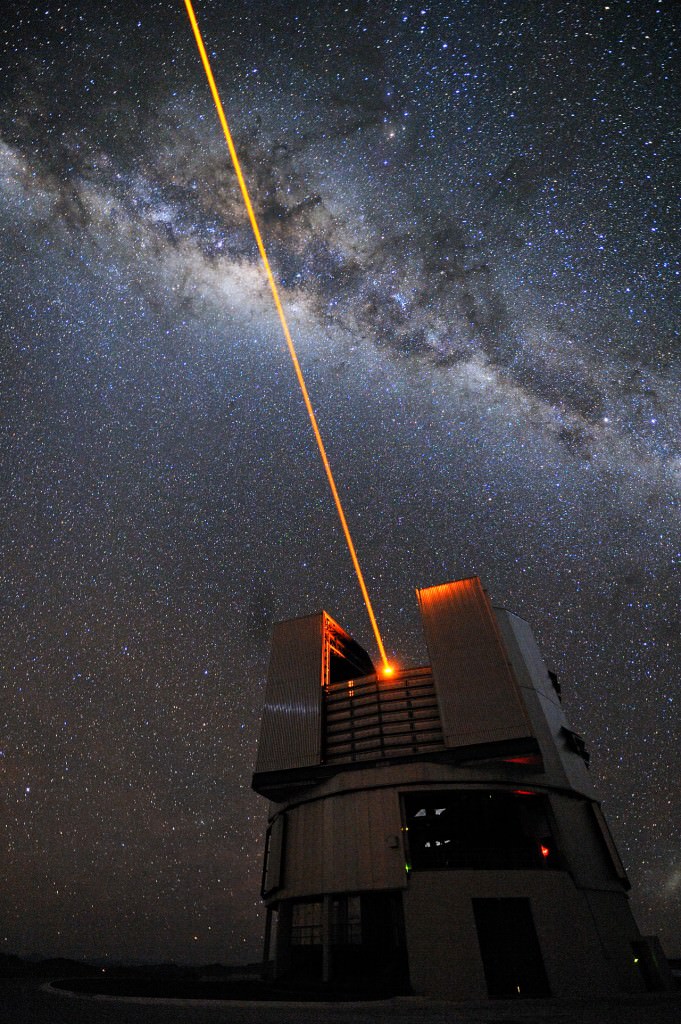
There are some natural stars in the sky that can be used as guide stars, but they’re not spread throughout the sky, limiting their usefulness and restricting the operations of observatories. For the most part, modern observatories make use of laser guide stars. They’re artificial stars created to tell the AO system how to adapt to seeing conditions. They still work in conjunction with a natural star, but in this case the natural star doesn’t need to be very bright, so laser guide stars allow telescopes to work in any part of the sky. Even if there are no bright, natural stars nearby.
A new side-by-side image from the National Science Foundation’s NoirLab shows clearly the difference between an image from telescope with an AO system and one without.
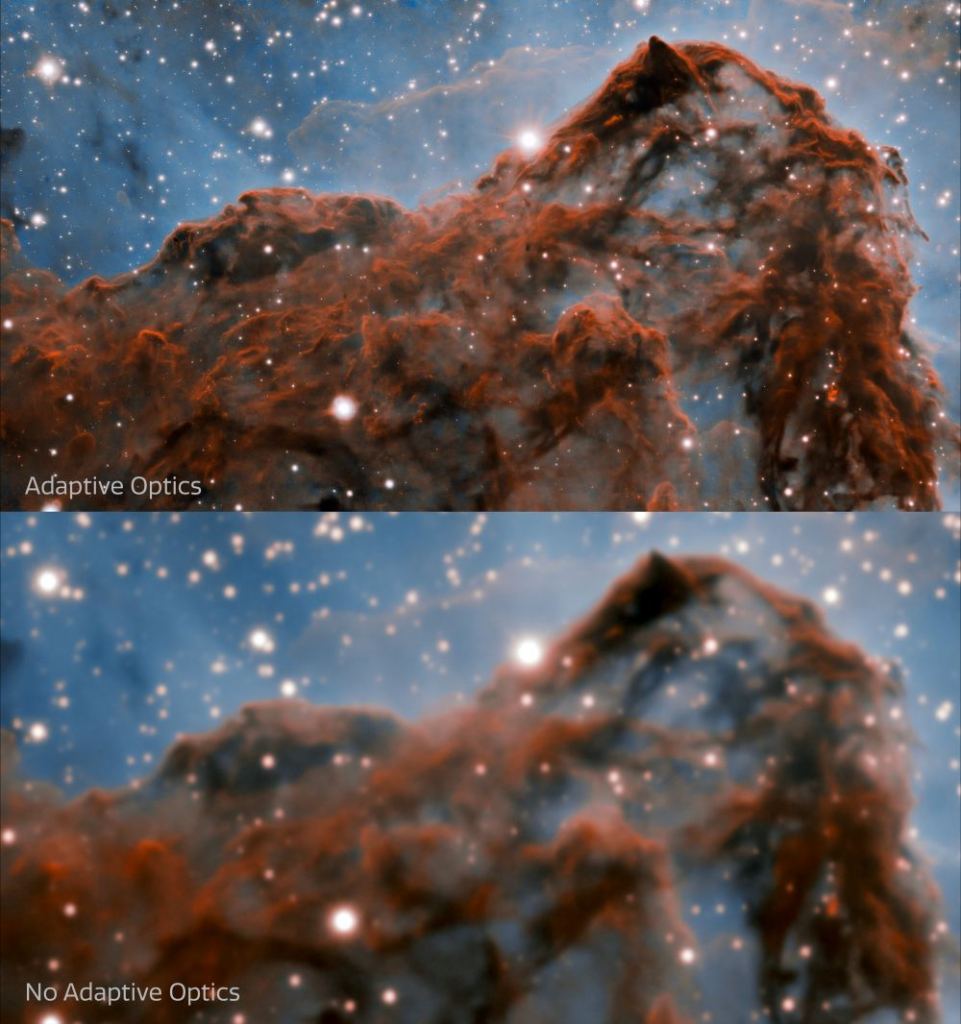
In the comparison images above, the top one was taken with the Gemini South telescope with the GSAOI instrument using the GeMS adaptive optics system. The bottom image was taken at the Cerro Tololo Inter-American Observatory with the Víctor M. Blanco 4-meter Telescope using the NEWFIRM instrument.
Adaptive Optics systems in modern observatories are always seeking the perfect correction without finding it. In a talk at NASA’s 2018 Ames Summer Series, Claire Max spoke about AO systems in detail. Max is a Professor of Astronomy and Astrophysics at the University of California, Santa Cruz, where she is Director of the University of California Observatories.
The basic problem in astronomical observations is that a wavefront distortion changes the path of light so that the light rays are no longer parallel. If they’re not parallel, they can’t be focused effectively, and images are blurry.
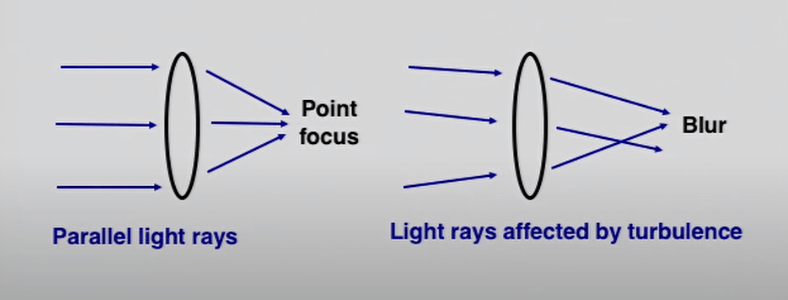
In her talk, Max explained that “The optics system is expecting the rays to come in parallel, but they’re not, so you get this blurred image.” Adaptive Optics is the solution to that problem.
The turbulence in the atmosphere is always changing. So the AO system has to keep working in real time. The system can adapt hundreds of thousands of times per second in some observatories.
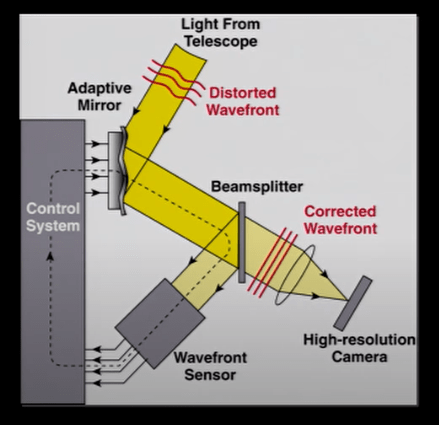
The image above shows how a closed-loop feedback control system works. When light initially enters the telescope, it’s still distorted from the atmosphere, even after the primary mirror. The AO system changes the shape of the Adaptive Mirror to opposite of the distorted wavefront. At that point, the light is mostly corrected.
Next, the Beamsplitter “steals” some of the light, directing it towards a wavefront sensor, where it’s measured again, and back to the Control System. The bulk of the light is sent to a camera to capture images, or to a spectrograph or other instrument. The light that goes back to the Control System is how the entire AO system is continually correcting “the difference between a perfect wavefront, and what your deformal mirror did on the last time stamp,” as Max said in her talk. This is how the system feeds back on itself.
“You almost have a perfect correction, but not quite…” said Max. The measurements and corrections are never perfect, and the characteristics of the wavefront are always changing, too.
The development of AO systems has been of enormous benefit to modern astronomical observatories. But there are still some challenges that require even better AO.

For one thing, it’s less effective with shorter wavelengths of light. While current AO systems are very effective for infrared, there’s a need to develop AO systems that work better with visible light. For visible light, AO systems need faster response times, brighter guide stars or laser guide stars, and more actuators on the deformable mirror.
If we can develop better visible light systems, then ground telescopes may even perform better than the James Webb Space Telescope, which is not subject to atmospheric wavefront distortions.
In the near future, telescopes like the Giant Magellan Telescope, the Extremely Large Telescope, and the Thirty Meter Telescope will all come on line. More advanced AO systems will be a part of those future telescopes. It’ll be a very exciting time in astronomy.

